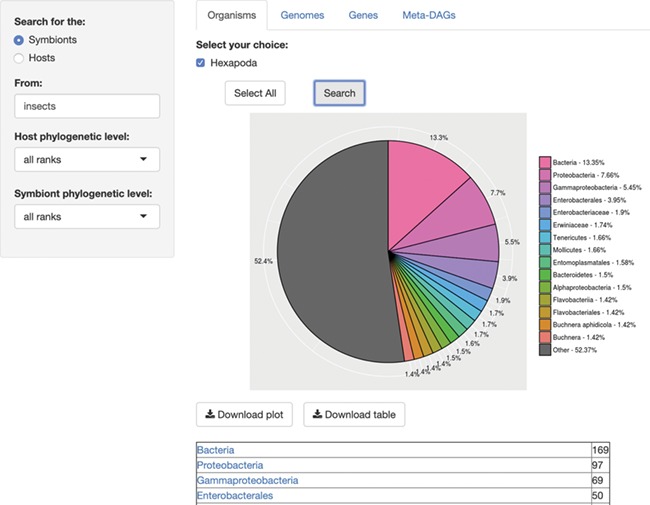Figure 1.

SymGenDB’s Organisms module. For this example, we searched for the symbionts of insects included in SymGenDB. It is worth noting that we used the term ‘insects’ and the output shows the scientific name ‘Hexapoda’ because the database includes a hefty list of synonyms so users do not have to know/search only for scientific names. We searched for both the host and the symbiont’s phylogenetic level as default, and the result shows an abundance chart (only the first 15 most abundant hits are displayed in color, the rest are encompassed in grey) and a list of organisms showing all the hits. Each resulting ‘organism’ (or family, genus, class, etc.) is a link to its NCBI taxonomy page. The resulting list shown in this figure is cut short for spacing purposes.
